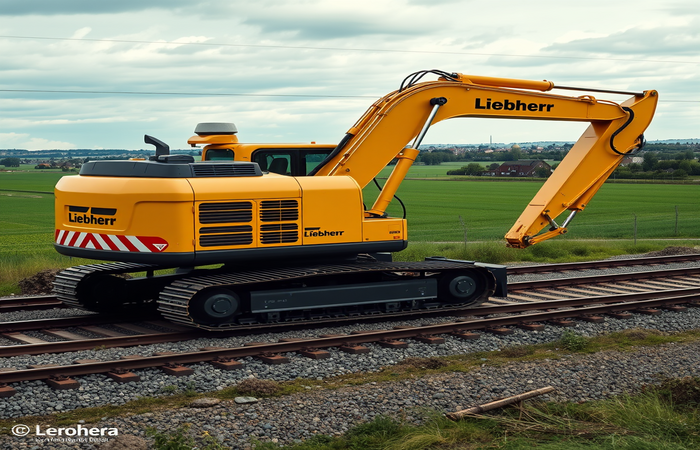Grand Paris Express: Vinci Builds Elevated Stations

The Grand Paris Express: A Case Study in Large-Scale Transit Infrastructure Development
This article delves into the significant contributions of Vinci Construction to the Grand Paris Express (GPE) project, specifically focusing on the recent €80.9 million contract awarded for the construction of three elevated stations on Line 18. The GPE is a massive undertaking, aiming to revolutionize public transportation in the Île-de-France region (Paris and its surrounding area) by creating a new network of automated metro lines. This expansion will significantly impact the region’s urban development, commuting patterns, and overall economic growth. The project’s scale presents significant engineering challenges, demanding innovative solutions and meticulous planning to ensure timely completion and seamless integration with the existing infrastructure. We will examine Vinci’s role in this ambitious project, analyzing the complexities of elevated station construction, the integration of different engineering disciplines, and the broader implications for sustainable urban transit development. We will also discuss the broader context of the GPE and the importance of such large-scale infrastructure projects for modern metropolitan areas.
Elevated Station Construction: Engineering Challenges and Solutions
The construction of elevated stations, such as those awarded to Vinci, presents unique engineering challenges compared to underground stations. Factors such as minimizing disruption to existing surface-level infrastructure, ensuring structural stability in varying soil conditions, and integrating aesthetic considerations within a busy urban environment necessitate detailed planning and innovative construction techniques. Vinci’s contract includes the civil engineering and structural works, metal framing, facade construction, and finishing works for the Palaiseau, Orsay-Gif, and CEA Saint-Aubin stations on the Line 18 viaduct. This integrated approach allows for streamlined construction and better coordination between different disciplines, contributing to cost efficiency and project timelines. The use of prefabricated components and advanced construction methodologies, potentially including modular construction, can further accelerate the building process and reduce on-site labor, thus mitigating potential delays and risks.
Integration of Multiple Disciplines: A Holistic Approach
The success of the GPE, and projects like Vinci’s station construction, relies heavily on the seamless integration of various engineering disciplines. Civil engineering, structural engineering, architectural design, and systems engineering must all work in concert to ensure a functional, safe, and aesthetically pleasing end product. Vinci’s involvement extends beyond just the structural aspects; they also handle the envelope (the exterior shell of the building), including the metal frame and facades, as well as the interior finishing works. This holistic approach facilitates a unified design and construction process, reducing potential conflicts and improving overall efficiency. Furthermore, the successful execution of such integrated projects underscores the importance of collaborative project management, employing digital tools and techniques for effective communication and coordination amongst all stakeholders.
Sustainable Urban Transit and the Broader Impact of the GPE
The GPE is not merely an expansion of Paris’s public transportation network; it’s a crucial element in the region’s sustainable urban development strategy. By providing efficient and reliable mass transit options, the GPE aims to reduce reliance on private vehicles, thereby mitigating traffic congestion, improving air quality, and reducing carbon emissions. The choice of elevated stations in certain areas reflects a careful consideration of urban planning and environmental impacts. Vinci’s contribution to the GPE, therefore, goes beyond simply building stations; it’s about actively participating in the creation of a more sustainable and livable urban environment. This commitment to sustainable practices should also extend to the construction process itself, emphasizing responsible material sourcing, waste reduction, and energy-efficient construction methods.
Conclusion: Vinci’s Role in Shaping the Future of Parisian Transit
Vinci Construction’s involvement in the Grand Paris Express project, particularly their recent contract for the construction of three elevated stations on Line 18, represents a significant contribution to the development of a modern, efficient, and sustainable public transit system for the Île-de-France region. The €80.9 million contract highlights the scale and complexity of the GPE, requiring a high level of engineering expertise and project management capabilities. The successful execution of this project, encompassing civil engineering, structural works, and the complete building envelope, underscores Vinci’s capacity to manage large-scale infrastructure projects. The integrated approach adopted by Vinci, combining various engineering disciplines under a single contract, exemplifies best practices in project delivery. Moreover, Vinci’s contributions align with the broader goals of the GPE in promoting sustainable urban development by reducing reliance on private vehicles and improving air quality. The 38-month timeline for completion underscores the importance of efficient construction techniques and robust project planning. This project, along with Vinci’s other ongoing work on the GPE (including a significant tunnel section and an operation and maintenance center), demonstrates their commitment to the long-term success of this transformative infrastructure project and its role in shaping the future of Parisian transportation.




